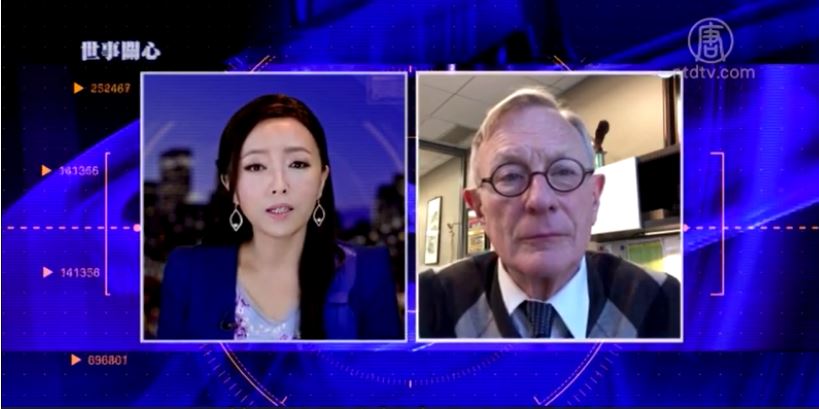
|
January 30, 2018
NTD Interview
|
|

|
January 16, 2018
CNN Interview - Part 1
|

|
January 16, 2018
CNN Interview - Part 2
|
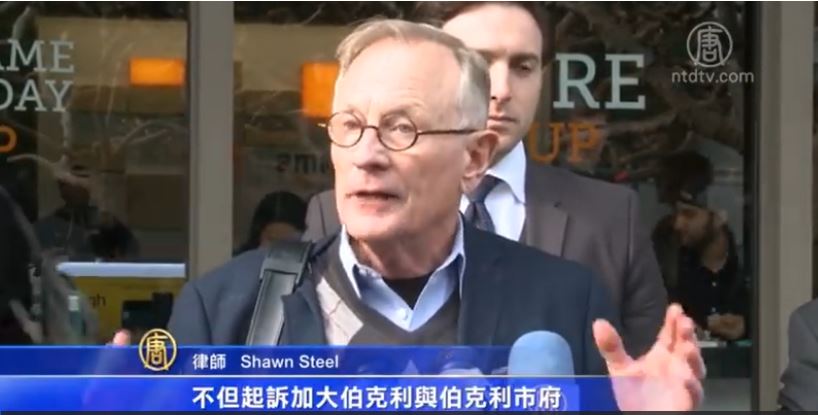
|
January 16, 2018
Press Conference
|
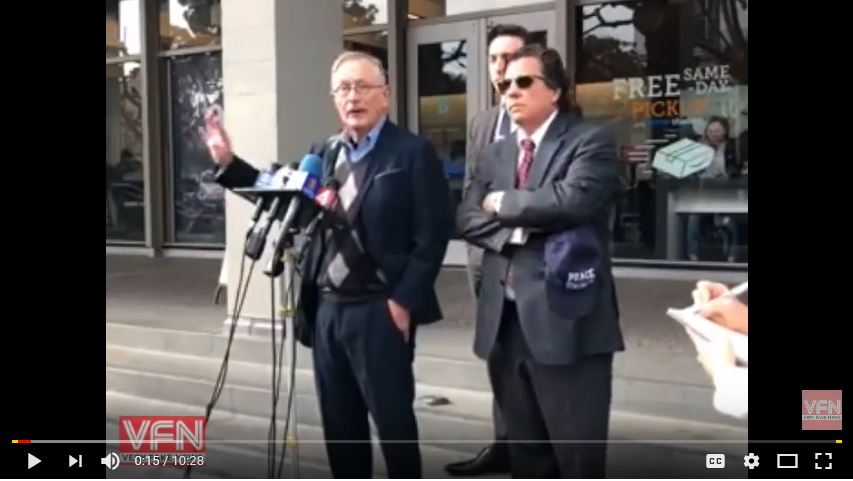
|
January 16, 2018
Press Conference
|

|
October 24, 2017
CNN Interview
|

|
October 18, 2017
CNN Interview
|
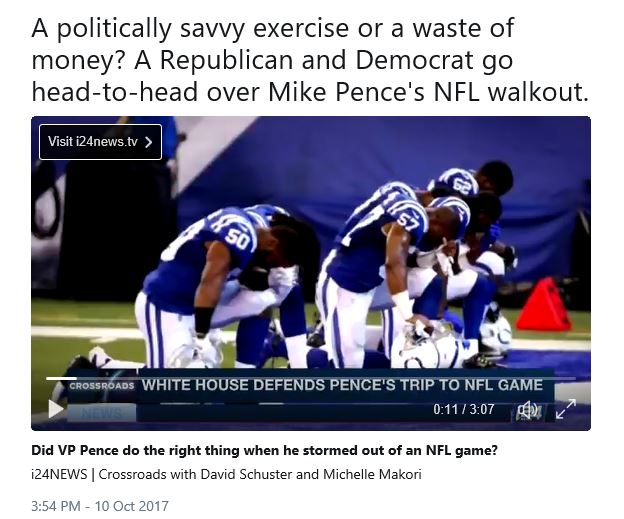
|
October 10, 2017
i24News Interview
|
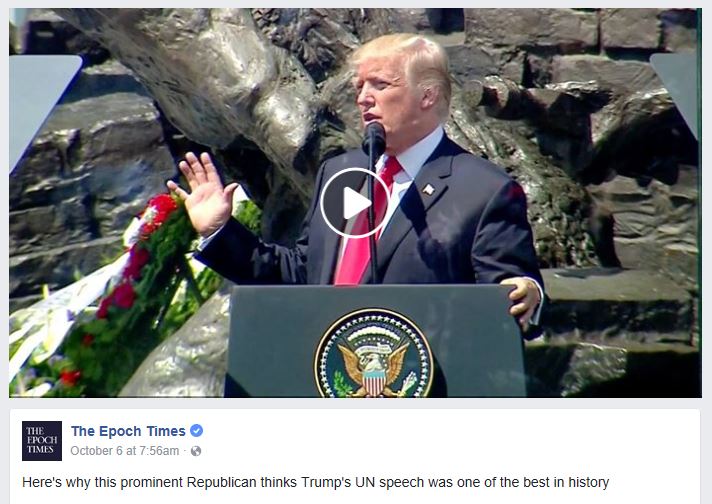
|
October 6, 2017
The Epoch Times Interview
|
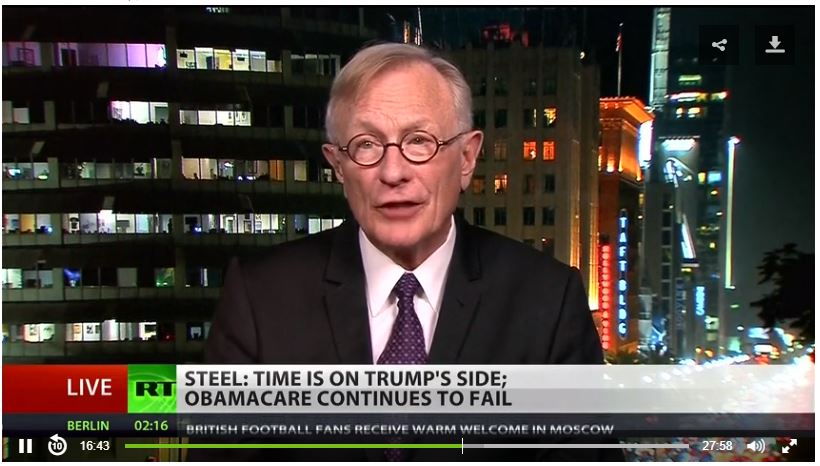
|
September 27, 2017
RT America Interview
|
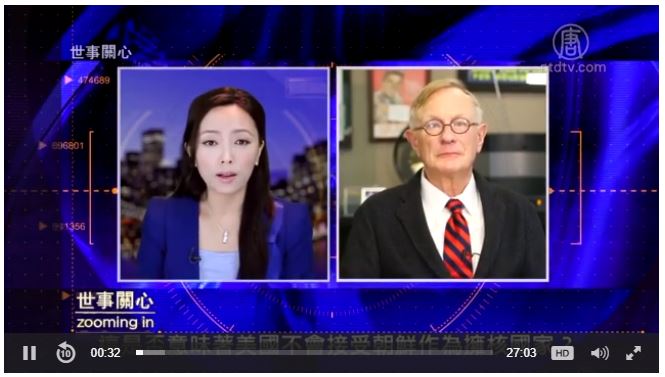
|
September 26, 2017
NTD Interview
|
|
|
|
|
|
|
|

Black Republicans lead political poll reversal
November 14, 2021
Evangelical Christians always vote Republican. Always have. African Americans are attracted to the polls by Democrats. Always will.
Or, maybe not.
Over the past two election cycles, Republicans have made quiet and substantial gains with African American voters by nominating dynamic Black candidates with magnetic appeal. This month, Republican Winsome Sears became the first woman and first woman of color to win a statewide election in Virginia.
“In case you haven’t noticed, I am Black and I have been Black all my life, but that’s not what this is about,” the Jamaican-born immigrant and Marine Corps veteran said in her victory speech. “We have things to tend to. We are going to fully fund our historically Black colleges and universities. We’re going to have safer neighborhoods, safer communities, and our children are going to get a good education.”
Unsurprisingly, her power to disrupt Democrats’ political monopoly on Black voters has triggered vitriolic hate speech from the left. In a recent racist tirade, MSNBC contributor Michael Eric Dyson attacked Sears as a “Black mouth” for “White supremacist practices.” Progressive journalist Glenn Greenwald called it “one of the most repugnant and racist segments broadcast by a TV network.”
“The message could not be clearer: People of color are duty-bound to recite liberal orthodoxy and pledge loyalty to the DNC, and those who don’t are brainless puppets being used,” Greenwald tweeted.
That sentiment had been echoed during the campaign by none other than Democrat L. Douglas Wilder, Virginia’s first Black governor. He openly chastised Democrats for taking black voters for granted.
“No Democrat can win a statewide election in Virginia without massive support from the black community; however, their needs continue to be ignored by those who purport to represent them,” the Democrat wrote in an open letter to his party. “The people are not stupid; they are voting on issues and for those who speak to the issues that impact their lives.”
Sears’ victory isn’t isolated, but the latest in a series of victories for Black Republican candidates. Not since Reconstruction have there been more African American Republicans in Congress, including Republican Tim Scott, the first African American of either party to represent a southern state in the U.S. Senate.
Across the South, Republicans are expanding their bench with Republican African American statewide officeholders. Throughout the COVID-19 pandemic, Gov. Larry Hogan handed over the day-to-day responsibilities of governing Maryland to Lt. Gov Boyd Rutherford, the first Republican lieutenant governor to ever be re-elected in Maryland.
In the Bluegrass State, Attorney General Daniel Cameron is the first African American independently elected to statewide office in Kentucky’s history and the first Republican elected to the Attorney General’s office since 1948.
Even in deep blue California, Republicans are making gains at the local level by electing Black Republicans. In 2020, heavily Democratic Stockton ousted its incumbent Democrat Mayor Michael Tubbs. Once a rising Democratic star, Tubbs had been heralded by progressives, profiled in an HBO documentary, and financially backed by Oprah. Yet, he was replaced with Kevin Lincoln, a former Marine who campaigned on addressing the city’s homeless crisis.
More and more Black voters are flexing their political power to choose. In 2012, Black voters in Virginia backed President Barack Obama by a 93-to-6 percent margin. Virginia’s Governor-elect Glenn Youngkin doubled that margin this time around by engaging directly with Black communities and prioritizing funding for Historically Black Colleges and Universities. For the first time ever, the Hampton Roads Black Caucus, which had endorsed Democrat Terry McAuliffe in 2015, backed the Republican candidate.
Black voters are a powerful political force with gradually changing political views. A June 2021 Morning Consult/Politico national tracking poll found that a solid plurality, 46 percent, of Black Americans felt that recent Black Lives Matter protests were empty rhetoric bringing meaningful conversations, but little change in America when it comes to addressing race relations.
Democrats hoping to stave off Republican gains with Black voters aren’t going anywhere with its far-left agenda. The same survey found that just 21 percent of Black voters believe that critical race theory has a positive impact on society.
If you follow the science, it turns out the magnetic forces aren’t fixed. Like voting blocs, the magnetic poles are constantly changing with gradual shifts that precede an eventual pole reversal. By taking Black voters for granted, Democrats could be headed for a “poll reversal” of their own.

You and the Law | When chiropractors and lawyers must say ‘no’
August 24, 2021
August 24, 2021 at 2:00 a.m.
Today’s story will be of special interest to both chiropractors and personal injury lawyers who have recently started their own practice and are tempted to accept just about anyone who has been in an auto accident.
“This can be a monumental mistake,” warns California attorney Shawn Steel. His practice concentrates on personal injury law and strongly supports the chiropractic profession. He lectures at Palmer West Chiropractic, Life Chiropractic College West and Southern California University of Health Sciences.
“If there is one professional area where attorneys and chiropractors should be on the same page it is in recognizing when to say “Thanks for coming to see me, but I don’t think that my office will be able to help you.” He provided this list of red flags that must be recognized and immediately acted upon.
Beware of the wandering thief
This person’s goal in life is to take advantage of anyone whose path they cross. They intend to cheat you before even walking through your door.
They may have a legitimate accident case. They may be hurt. But their sole objective is a payout in their pockets and not yours!
If the doctor recommends that they have an attorney, the wandering thief will strongly object! An attorney would require a signed lien — assuring payment of all bills and attorney fees — but without it, and aftercare is complete:
(A) The wandering thief fires the lawyer;
(B) Negotiates the case themselves with the insurance adjuster;
(C) Gets all the money, pays none of the treatment bills or attorney fees. Then they vanish.
The giveaway for the lawyer is that, after signing the retainer agreement, the client will pressure the lawyer to have the doctor order lots of medical testing, to generate high bills.
Once a settlement amount is negotiated — but not paid — they will be unhappy with the numbers, fire the lawyer and try to settle the case themselves. Even if the attorney’s name is on the settlement check, they forge the lawyer’s name, take the money and disappear.
The know-it-all
These people know more than the doctor and the lawyer combined. They constantly second guess the doctor and argue with their lawyer, consuming a tremendous amount of time and energy. It is usually better for your mental health to let that know-it-all patient go! This person brings nothing but aggravation to the lawyer’s office, often saying things like, “I had a friend who with the same facts as my case settled for eight times as much as you want me to take, so what’s wrong with you?”
The grouch, a first cousin to the know-it–all
The grouch is easy to spot. Your staff are the first ones to notice that you’ve got a grouch in your office. Always listen to your staff as they will tell you the truth.
The grouch complains about everything! They blame the staff for not setting their appointment as the best time, not giving them adequate advance notice, and make up stuff to complain about. They take the joy out of practice for both doctors and lawyers.
They are miserable human beings. While it is best to unload this grouch, you can try to rescue the situation by saying, “If you want to stay with us, you need to stop complaining.”
The schizophrenic: A first cousin to the grouch, a real-life version of Dr. Jekyll and Mr. Hyde.
This person is nice to you but miserable to your staff: insulting and yelling. However, they are as sweet as cotton candy to you. Give them one warning: “Yell at my staff one more time, and you are out of here! No one deserves to be spoken to the way you treat people.”
Doctors and lawyers need to understand there is a great liberation when you let that person go. Mentally you are free from a burning, destructive sensation in your life. Neither you nor your staff should have to experience this.
The doctor/lawyer hopper
These people immediately trash the last lawyer/doctor who was handling their case. If it is just one attorney, or one doctor, that can happen. But if it is multiple doctors or lawyers? You must think, “This person will never be happy with me, no matter what I do. So why go through the effort as I will no doubt get fired anyway.” Decline to accept them.
This person gives me a bad feeling!
If there is something inherently negative between you and this potential patient/client, do not accept them. You do not need a reason. It may not be rational, but trust your inner voice. “Trust the Force!”
A business prof offers his formula
Lyle Sussman, the former chairman and professor of Management, College of Business, University of Louisville offered this recommendation for anyone in business who needs to say “no.”
“Say no if there is a disconnect — differing expectations — between what the person thinks you will provide and what you know you can deliver.
“Every plastic surgeon can tell a story about a patient disappointed because the procedure did not produce the gorgeous effect they anticipated.”

Steel: ‘Zuckerbucks’ Corrupted the 2020 Election for Big Tech
May 30, 2021
Dark Money. Citizens United. The Koch Brothers.
Remember when Democrats used to decry the corrupting influence of corporate money in politics?
“Today, the Supreme Court kept open the floodgates to uninhibited special interest spending in our campaigns and in our politics,” Speaker of the House Nancy Pelosi lamented following a 2012 Supreme Court decision to uphold Citizens United. “Their disappointing decision to uphold Citizens United deals yet another blow to a fundamental American value: that the voices of the people determine the outcome of our elections, not the checkbooks of the few.”
Nine years later, the Democrat Party is content to see American elections outsourced to “the checkbooks of the few” – so long as the checks are signed by Big Tech. While mainstream media headlines have focused on President Trump’s bans from Twitter, Facebook, and Instagram after the election, Big Tech’s greatest election manipulation came well before voters cast their ballots and in a decidedly traditional way. Good old-fashioned money in politics. Too late to affect the outcome, the public is slowly learning more about how Facebook founder and CEO Mark Zuckerberg, and his wife, Priscilla Chan, funneled more than $419.5 million through two non-profit organizations to influence the 2020 election. At the time, Zuckerberg framed the donation as necessary to help election officials prepare for unforeseen challenges posed by the COVID-19 pandemic. Yet far from personal protective equipment for poll workers and contactless voting, Zuckerberg’s millions bankrolled get-out-the-vote campaigns. The public should be deeply troubled by the partisan affiliation of the private groups tapped by Zuckerberg to enhance voter participation. The bulk of the Zuckerberg money – $350 million – was channeled to the Center for Technology and Civic Life (CTCL). The group’s founder and executive director, Tiana Epps-Johnson, is a former Obama Foundation Fellow and Election Administration Director of the far-left New Organizing Institute. According to CTCL’s own report, election officials spent the funds on “social media and advertising” and allowed government officials to “purchase thousands of dollars in billboards, television commercials, radio, etc.” The second group receiving Zuckerberg election funds, the Center for Election Innovation and Research, spent $69.5 million in 23 states. Its funding was inequitably distributed to aid battleground states. More than half of CEIR grants were distributed to just four swing states: $13.2 million to Pennsylvania, $11.9 million to Michigan, $5.6 million to Georgia; and $4.8 million to Arizona. New York has double the population of Michigan, yet received just $5 million – less than half of Michigan’s funding. If the funds were truly meant “to provide nonpartisan, accurate, and official voting information to the public,” why did more populous but uncompetitive states receive less money? More than six months after the election, the public still doesn’t have a full accounting of the full extent of how these organizations spent nearly a half-billion dollars. The only available accounting: a locked Google spreadsheet that identifies the 2,500 government agencies that received funding, but that doesn’t share how much each entity received or how the funds were spent. “The full extent of the grants isn’t known,” NPR News concluded in its December 2020 investigation into the unprecedented privatization of the 2020 election administration. “The Center for Tech and Civic Life declined repeated interview requests from APM Reports to discuss the funding and how it was used. In late October, the group listed the jurisdictions that received funding on its website but didn’t disclose dollar amounts or funding priorities for each jurisdiction.” In addition to the partisan affiliations of its founders and lack of transparency for how the money was spent, the public should be concerned that the group’s voter turnout efforts were heavily concentrated in Democrat strongholds in swing states. The Associated Press confirms that CTCL distributed “$6.2 million to Wisconsin’s five largest cities, $10 million to Philadelphia, and $6 million to Fulton County, which includes Atlanta.” A March 2021 report by the Foundation for Government Accountability found that Democrat counties received 92 percent of CTCL’s funding in Pennsylvania. “It just doesn’t pass the smell test,” says Nicholas Horton, research director for the Foundation for Government Accountability. “Government should be a neutral, fair arbiter of the election process, and the public should have no doubts and full confidence in that process when going to vote in the polls.” Shawn Steel, a former chairman of the California Republican Party, is a member of the Republican National Committeeman.

Top Republicans: Ousting Governor Newsom is the last chance for the middle class
March 26, 2021
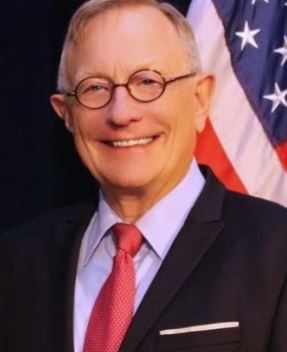
Our reporter Shang Ying reported from Los Angeles
California Gov. Gavin Newsom's final deadline for removing the agency received more than 2.1 million signatures, well above the 149,5709 required by state law, according to RescueCalifornia.org. In response, Mr. Shawn Steel, the Republican member of the RNC, said it was no surprise that the signatures were enough to satisfy California's gubernatorial recall election this year. He sees the removal of incumbent Governor Newsom and the change of California as the last chance for the state's middle class to preserve their homes.
Under California rules, election officials in 58 california counties are required to verify valid signatures and notify the secretary of state by April 29 after submitting recall signatures. Steele revealed that the recall organizers pre-verified the collected signatures to ensure efficiency before submitting all signatures to the secretary of state. By the March 17 signature deadline, counties had confirmed nearly 1.2 million valid signatures. As a normal scenario, 1.495709 valid signatures are required to collect only about 1.6 million signatures, but in order to ensure that nothing is lost, organizers eventually collect more than 2 million. He admitted that, unlike California's usual elections, which do not check signatures, which determine whether to call a recall election, the state requires a check to verify signatures, and that they may find various reasons to invalidate signatures, or even half of the 1 million signatures. As a result, the recall organizers sought 2 million or more signatures in support to ensure that there were still enough valid signatures in such cases.
For now, the nation is watching the California governor's ouster, which Steele believes is about policy-related disasters and not partisanship. Although the state filed a lawsuit against the recall, he expects a 97 percent chance that the state will start a gubernatorial recall election this fall. Because of the loss of control and record unemployment in California after Newsom ben governor, tax increases have burdened California businesses and middle-class families, and many businesses and residents have moved out of the state. Steele pointed out that California's biggest problem is the disaster of far-left policies, Newsom signed a number of far-left bills after taking office, and poor management of 10 billion unemployment benefits were fraudulently claimed, California's crime spree and many other facts, the governor is to blame. California's environment is deteriorating, so that only the richest and poor are fit to live in the state, and small business owners and the broader middle class, the engine of the economy, are forced to move out. So he's looking forward to a successful gubernatorial election to change california, because it's the last chance for the state's middle class.
Steele also acknowledged that the success of recall elections is not easy and rare. There have been only two successful cases of ousting a governor in U.S. history, including the successful ouster of former Governor Davis by California voters more than 20 years ago. This time California is worse off, forcing voters to make that choice again. If the recall election is successfully launched, there will be two questions on the ballot paper on election day, first, whether voters agree to remove the current governor, Newsom? If voters agree, continue with the second question, selecting a candidate on the list to replace Newsom. As long as a simple majority votes in support of a recall, Newsom steps down. On the shortlist, the candidate with the majority of support wins the election to become the new governor of California. Currently, California has 5 million registered Republican voters and 7.5 million Democratic voters, and more voters are increasingly choosing nonpartisan, with a majority in california that is 1 more conservative or more liberal. Steele revealed that the recall election, the Democratic Party must launch another candidate, or once Newsom is removed, the governor automatically for the Republican candidate. But the launch of another Democratic candidate is bound to create divisions within the party. Once recall election day is set, it will be interesting.
He stressed once again that only by ousting Mr. Newsom would Californians have new opportunities, and that a better state should not be brought down by far-left and government union organizations. The disaster caused by California's far-left policies is also reflected in the fact that California's policies make life unaffordable for young and old. Many young people were born in California, where their parents provided them with comfortable homes, but as adults they were unable to buy a home in the state and have the standard of living that their parents had provided them with. But in Texas, Florida can. Much of California's wealth is spent on social welfare and free health care, but not for the average California taxpayer. So California is currently the state with the highest number and proportion of poor people in the country, which was not the case in California. Alabama and South Carolina used to have the largest percentage of the poor, but that changed. California's welfare policies attract more and more poor people, and the state's middle class pays for California's heavy taxes under the welfare policies. The super-rich don't care about California tax increases, and they don't live in California most of the time. In the end, the middle class was forced to move out of California.
|
Articles
2025
2024
2023
2022
2021
2020
2019
2018
2017
2016
2015
2014
2013
2012
2011
2010
2009
2008
2007
2006
2005
2004
2003
2002
2000
1998
1996
|